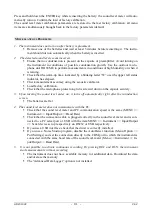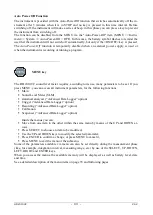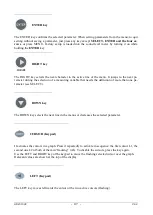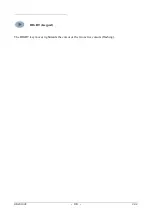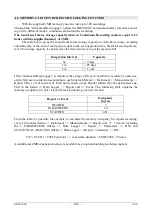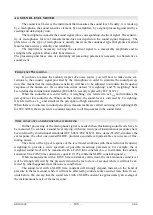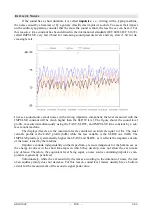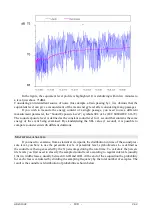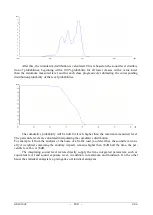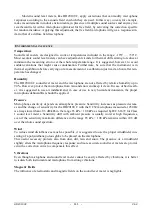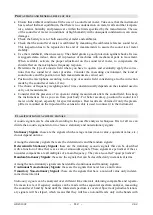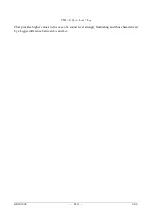
HD2010UC
- 103 -
V4.2
A3: THE SOUND
The sound is a variation of pressure audible by the human ear. Its propagation, starting from
the source, occurs in the form of waves and is thus subject to all the phenomena typical of the
waves, such as refraction and diffraction. The propagation speed depends on the medium and, in the
air, at ambient temperature, it equals to about 344 m/s.
The ear sensitivity is quite high and able to perceive pressure variations equal to about 20
μPa, corresponding to 5 parts a milliard of the atmospheric pressure. This incredible sensitivity is
joint to the capacity to bear pressure variations more than one million times higher. For conven-
ience, it was decided to indicate the sound pressure level in decibel rather than pressure in Pascal, in
order to reduce the numeric extension.
The decibel (dB symbol) is defined by:
0
10
log
20
X
X
dB
⋅
=
where:
X is the measured quantity.
X
0
is the reference value of the measurement (to which corresponds 0 dB).
In acoustics, the pressure is the measured quantity and the reference value corresponds to 20
μPa, the minimum audible pressure. Therefore the sound level corresponding to a 20 μPa (0.00002
Pa) pressure variation will be indicated as 0 dB. The sound level corresponding to a 20 Pa sound
variation will be indicated with 120dB, a level at the limit of the pain threshold.
An increase by 10 times of the sound pressure corresponds to a level increase by 20 dB, while
an increase by 100 times of pressure corresponds to an increase in level by 40 dB: the sound level
increases by 20 dB against each increase of a factor 10 of the sound pressure. Similarly, the increase
of the level is equal to 6 dB for each doubling of the sound pressure.
The use of decibels to indicate the sound level has, besides the evident advantage to reduce
the measurement numeric range, the advantage of providing a good approximation of the audible
perception that follows the sound pressure on a logarithmic scale.
Not all pressure variations are audible. When a pressure variation is due, for example, to cli-
matic variations, it changes too slowly to be heard, but, if it is fast, like, for example, that produced
by striking the drum or by bursting a balloon, it can be heard by the human ear and is consequently
identified as a sound.
The number of pressure oscillations/second is called sound frequency and is measured in cycles per
second or Hertz (Hz). The audible frequency range extends between approximately 20 Hz up to 20
kHz. Under 20 Hz we enter the infrasound field, while over 20 kHz we enter in that of ultrasounds.
Hearing sensitivity is not constant throughout the whole range of audio frequencies, but it
shows a consistent loss at very low or high frequencies. Sensitivity is at its maximum in the range
between 1 kHz … 5 kHz. The variation of auditory sensitivity according to sound frequency also
depends on the sound intensity. “Isophone” curves (equal loudness level contours), defined in ISO
226:2003 standard, are shown in the following graph and provide the sound pressure level giving
the same audibility (loudness) at different frequencies. The dotted curve, named MAF (Minimum
Audible Field) indicates the minimum audible threshold.
Music, voice and noises in general are usually distributed throughout a wide interval of fre-
quencies. Borderline cases are: the “pure tone”, a sound made up by a variation of pressure at a giv-
Summary of Contents for DeltaOHM HD2010UC
Page 2: ...HD2010UC 2 V4 2 ...
Page 129: ...HD2010UC 129 V4 2 NOTES ...
Page 130: ...HD2010UC 130 V4 2 NOTES ...
Page 131: ......



